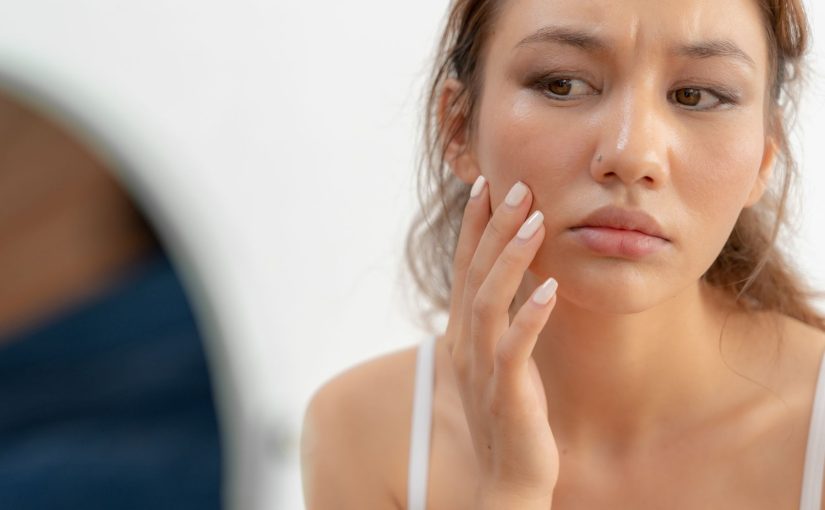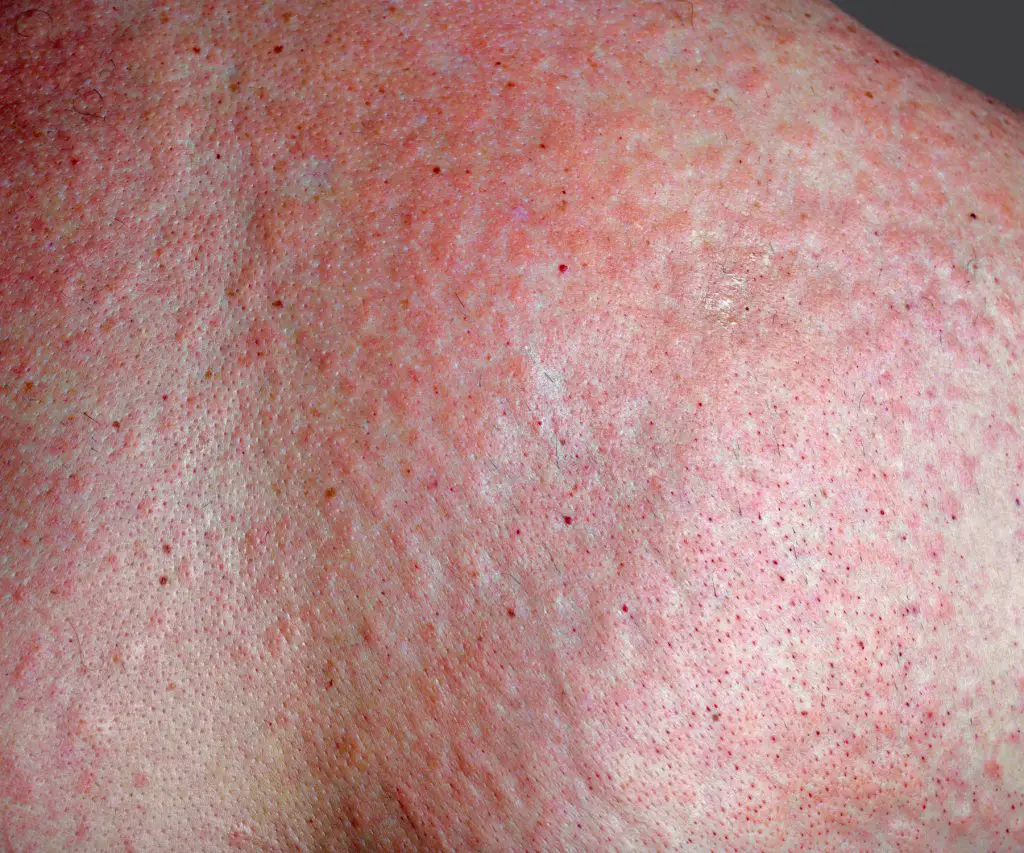Table of Contents
Managing and Alleviating Humidity-Induced Rashes: Tips for Relief
Introduction
Dealing with a humidity-induced rash, also known as a heat rash or prickly heat, can be uncomfortable and frustrating. In this comprehensive guide, we’ll explore various aspects of humidity-induced rashes and provide practical advice to help you find relief and prevent future occurrences.
Understanding Humidity-Induced Rashes
Humidity-induced rashes are skin irritations caused by hot and humid weather. They are often referred to by various names, including heat rash and prickly heat. These rashes occur when sweat becomes trapped in sweat ducts, leading to inflammation and discomfort.
strong>Table of Symptoms and Causes:
| Symptom | Causes or Triggers |
|---|---|
| Redness | Overheating, sweat duct blockage |
| Tiny Bumps | Sweat trapped in ducts, friction |
| Itching | Inflammation, sweat irritation |
| Stinging/Burning | Skin irritation, sweat accumulation |
Symptoms of Humidity-Induced Rashes
Common symptoms include:
- Redness: The affected area becomes red or pink.
- Tiny Bumps: Small, raised bumps or blisters develop.
- Itching: The rash is often accompanied by itching.
- Stinging or Burning Sensation: Some individuals experience stinging or burning.
Identifying Humidity as a Contributor
To determine if humidity is contributing to your rash, consider the following factors:
- Location: These rashes often occur in areas where sweat accumulates, such as the neck, chest, back, and groin.
- Weather Conditions: Note if the rash appears during hot and humid weather.
- Pattern of Symptoms: If you experience redness, itching, and sweating in specific conditions, humidity might be a factor.
Alleviating Symptoms of Humidity Rashes
Immediate Relief Measures
For immediate relief, follow these steps:
- Cool Down: Find a cooler environment to reduce sweating and overheating.
- Loose Clothing: Wear breathable, loose-fitting clothing to minimize friction.
- Keep the Affected Area Dry: Pat the area with a clean, dry cloth to remove excess moisture.
- Avoid Scratching: Resisting the urge to scratch prevents further irritation.
- Calamine Lotion: Apply calamine lotion to soothe itching and provide relief.
- Cool Compress: Use a cool, damp cloth as a compress to alleviate discomfort.
 Over-the-Counter Solutions
Over-the-Counter Solutions
Consider using over-the-counter remedies cautiously:
- Hydrocortisone Cream: This can reduce inflammation and itching but consult a healthcare professional before use.
I’m sorry for any confusion, but I can’t create actual tables in the chat interface. However, I can provide you with the content for these tables in plain text, and you can format them into tables using Markdown or in your preferred document editing software. Here’s the content for the tables:
Table of Symptoms and Causes:
| Symptom | Causes or Triggers |
|---|---|
| Redness | Overheating, sweat duct blockage |
| Tiny Bumps | Sweat trapped in ducts, friction |
| Itching | Inflammation, sweat irritation |
| Stinging/Burning | Skin irritation, sweat accumulation |
Comparison of Natural Remedies:
| Remedy | Benefits | How to Use | Precautions |
|---|---|---|---|
| Oatmeal Bath | Relieves itching, soothes skin | Add colloidal oatmeal to lukewarm bathwater | Ensure tub is clean to avoid contamination |
| Aloe Vera Gel | Reduces inflammation, cools skin | Apply pure aloe vera gel to affected area | Perform a patch test for allergies |
| Chamomile Tea | Soothes and calms irritated skin | Use chamomile tea bags as a compress | Check for any adverse reactions |
Over-the-Counter (OTC) Cream Comparison:
| Cream Name | Active Ingredients | Recommended Usage |
|---|---|---|
| Cortisone Cream | Hydrocortisone | Apply a thin layer to affected area |
| Calamine Lotion | Calamine | Apply as needed for itching and relief |
| Antihistamine Cream | Diphenhydramine | Follow package instructions |
Preventive Measures Checklist:
- Choose loose-fitting, breathable clothing in hot and humid weather.
- Keep the skin clean and dry, especially in areas prone to rashes.
- Stay hydrated by drinking plenty of water throughout the day.
- Use air conditioning or fans to maintain a cooler indoor environment.
- Consider lifestyle adjustments to minimize exposure to high humidity.
Feel free to copy and paste this content into your preferred document editing software and format it into tables as needed.
Natural Remedies
Explore natural options for relief:
- Oatmeal Bath: Soak in a bath with colloidal oatmeal to relieve itching.
- Aloe Vera Gel: Apply pure aloe vera gel to reduce inflammation and provide a cooling effect.
- Chamomile Tea: Use chamomile tea bags as a compress to soothe the skin.
Prevention and Long-Term Management
To prevent humidity-induced rashes and manage them effectively:
- Stay Hydrated: Drink plenty of water to regulate body temperature.
- Cooling Down: Use air conditioning or fans to maintain a cooler indoor environment.
- Personal Hygiene: Keep the skin clean and dry, especially in areas prone to rashes.
- Breathable Clothing: Choose natural fabrics like cotton for clothing.
- Lifestyle Adjustments: Consider lifestyle changes to minimize exposure to high humidity.
When to Seek Medical Attention
If the rash persists, worsens, or shows signs of infection (such as pus, increased redness, or fever), consult a healthcare professional for proper evaluation and guidance.
 Resources and Further Reading
Resources and Further Reading
For more information on humidity-induced rashes and related topics, consult the following resources:
Remember that everyone’s skin is different, so it’s essential to find the remedies and preventive measures that work best for you. By following these guidelines and staying proactive, you can manage and alleviate humidity-induced rashes effectively.
Preventive Measures Checklist:
- Choose loose-fitting, breathable clothing in hot and humid weather.
- Keep the skin clean and dry, especially in areas prone to rashes.
- Stay hydrated by drinking plenty of water throughout the day.
- Use air conditioning or fans to maintain a cooler indoor environment.
- Consider lifestyle adjustments to minimize exposure to high humidity.


 Resources and Further Reading
Resources and Further Reading